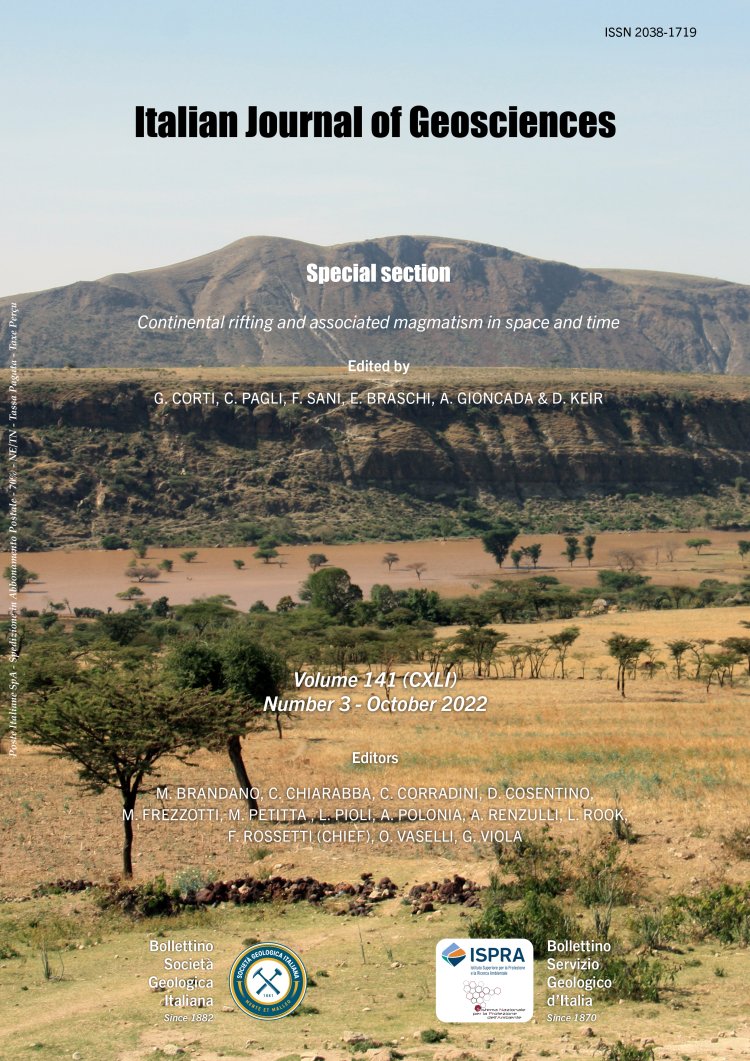
Hot metamorphic complex in the Foreland Zone of the Variscan chain: insights from the Monte Filau orthogneiss (SW Sardinia), Italy
Gabriele Cruciani1, Lorenzo Dulcetta1, Marcello Franceschelli1, Chiara Frassi2 & Giovanni Musumeci2
1Dipartimento di Scienze Chimiche e Geologiche, Università degli Studi di Cagliari – S.S. 554 Cittadella Universitaria, 09042, Monserrato (CA), Italy.
2Dipartimento di Scienze della Terra, Università degli Studi di Pisa, Via S. Maria 53, Pisa I–56./br>
Corresponding author e-mail: francmar@unica.it
Volume: 141 (2022) f.3
Pages: 385-399
Abstract
The Mt. Filau Orthogneiss belongs to the low-pressure (LP) - high-temperature (HT) Sulcis Metamorphic Complex located in the foreland zone of the Variscan belt (southern Sardinia). It consists of a core of orthogneiss and high metamorphic grade host rock tectonically juxtaposed below weakly- to non-metamorphic tectonic units, by the Tuerredda ductile shear zone. Our new petrographic and microstructural data on the fine–grained leucocratic facies of the Mt. Filau Orthogneiss are consistent with metamorphic peak under conditions of incipient partial melting in the sillimanite stability field at 680–700°C and 0.32–0.46 GPa. The retrograde P–T path occurred in the andalusite stability field, according to the growth of andalusite after sillimanite in leucocratic facies. The P-T conditions of metamorphic peak and incipient melting are both consistent with development, in the foreland zone, of a thermal anomaly accompanied by the upward rise of deep hot crust in the footwall of the Tueredda ductile shear zone. This transtensive shear zone acted as preferential channel for upward advection of deep hot melts during tectonically-driven isothermal decompression of middle crust. Therefore, we interpret the Sulcis Metamorphic Complex as the result of a tectonically controlled thermal perturbation, and underline the role of this late Variscan crustal scale tectonic structure in the development of hot metamorphic complex in an anomalous position within the foreland zone of the Variscan collisional belt.
Keywords
Get Full Text Supplementary Material